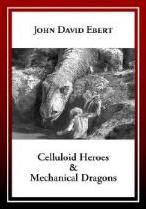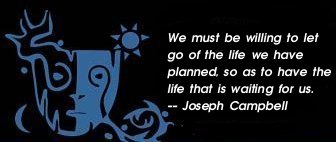|

Book Review by
William Doty, Ph. D.

John David Ebert. Celluloid Heroes and Mechanical Dragons.
Christchurch, NZ: Cybereditions, 2005. 1-877275-74-3, pb., $22.95; 1-877275-75-1,
PDF download, $17.95.
A disclaimer at the beginning: I have been in touch with the author for several years,
counseling and advising as his analytical genius has ripened into the fabulous array of
learning in this book. It is so stunning that it has led me to reconceive totally my own
approaches to what is slightingly termed "popular culture" (we so need a better term — one
sees the dilemma especially in that wicked nineteenth-century distinction between "high"
and "low" — yet this distinction is now outgrown as our mass-mediated culture finds elegant
waiters at toney restaurants dressed in the cowboy blue jeans that were prohibited at public
schools in my childhood in high-mountain New Mexico).
Ebert's scope/s must be emphasized at the outset. I have never read an analyst
who — in the most brilliant chapter of the volume — shows how Spielberg and Kubrick
have been filming cosmologies, cosmogonies that rival Hesiod's, and are further
complicated in that they are — pace Ebert — strongly influential upon one another.
Were I more "with it," I could imagine teaching chapter 12, "Stanley Kubrick and
Steven Spielberg: A Study in Polarity," in my course on Origin, Emergence, and
Creation Myths.
Displaying an amazingly comprehensive compass from Spengler to Campbell
and Margulis, Ebert may be one of the few cultural analysts around who can blithely
skip from supposedly "Celtic" materials to Egyptian, Assyrian, and even Paleolithic
analogues to celluloid fantasies of the master filmmakers of our era. The Spielberg-Kubrick
chapter alone is adequate reason to own this book. Ebert sees the two of them as, in
effect, writers of our contemporary Zeitgeist-ial scriptures, contributors along with many
other filmmakers to contemporary mythic expression.
Personally rather ignorant of cinema, I often had to grab my huge film compendia
to figure out who various characters named were, and I haven't a clue as to the
reference to "Maxwellian demons" (221). But the author is clear that "our contemporary
situation involves the challenge of living in a society dominated by machines, and
our psyche's response to this challenge is expressed by the myths of our popular
culture, in which machines are personified as living beings" (222). "And so the problem
of living in a mechanical/electronic society is what the new myths coming to us in
celluloid form are attempting to deal with, for it is a problem that has been appearing
with more and more obsessive frequency since the 1960s, and shows no signs of abating"
(223). His first sentence asks "What are the new myths?" (1), and after expositing just
how they appear in many films, he concludes that the auteurs are "busy dreaming up
myths to hold our society together for a little longer" (223).
Such "conscious use of myth" (5) is what makes directors such as Kubrick and
Lucas differ from Modernist authors and artists: Joseph Campbell, for instance,
saw James Joyce and Thomas Mann, Paul Klee and Pablo Picasso as providing
the new myths of his own time, completely ignoring film, which he considered "a
decline into realism" (3). Quite in contrast, Ebert proposes that "Film [...] is a
Gesamtkunstwerk [an all encompassing artistic product] that has taken up the
frayed threads of the drama, novel, classical music, symbolist poetry, painting and
acting, and woven them together into a new integral art form" (4).
This author's penchant for inserting all sorts of sources into one of his thematic
nets is remarkable. In commenting on our culture's phenomenon of gigantism ("an
attribute of both cultural and biological forms signaling that they are about to vanish"
(196), he refers to the eighteenth-century Great Chain of Being, Darwin's theory of
evolution, the temples at Luxor and Karnak, and the gigantic arches of decaying Rome.
Then we have the Paleolithic, the Eleusinian mysteries, the Mesopotamian New Year's
Festival, and monastic activities of Lindisfarne and Iona, before reference to the
ouroboros in Kekulé as well as Homer, Tibetan sandpaintings, Dante, Jung, Milton,
Mann, the Byzantine iconoclasts — alongside the films Close Encounters,
Star Wars, and The Lord of the Rings (196-98).
"These films are fulfilling an unconscious yearning of the public for connection with
a vanished mythological tradition that is no longer taught in schools, which have shifted
over to a largely vocational and technological, rather than humanistic curriculum"
(198) — part of Ebert's repeated sermon about the dangerous loss of human culture
and history before the increasing onslaught of applied technology and commercialism,
a theme as well in his book of interviews, Conversations on Science and Spirituality
at the End of an Age, 1999.
The author is most exercised by the "visionary" filmic tradition established by
George Melies at the dawn of cinema (as opposed to the "realistic" projections of the
Lumières brothers; 19). Many enormously important artists such as Werner Herzog
and Akira Kurasawa surface often in the book, as classical masters of modern film.
What is so useful about this book is the ways Ebert — who must have an astonishingly
rich ability to remember scenes and themes and perspectives — elucidates influences
and revisions of the giants' productions. That of course is what makes traditional culture,
folklore, mythology alive, as in Campbell's most famous citation: "The latest incarnation
of Oedipus, the continued romance of Beauty and the Beast, stand this afternoon on
the corner of Forty-second Street and Fifth Avenue, waiting for the traffic light to change"
(The Hero with a Thousand Faces, 1968-2nd ed., 4).
So far as I am aware, no one before Ebert has attempted to read the entire sweep
of contemporary cinematic productions (or at least those he most admires) with
respect to the levels of mythical consciousness they represent. Nor have they patiently
tracked, as this author displays in a marvelous appendix, "The Evolution of Visionary
Cinema Since 1968" (227-55), the lines of the direct cinematic inheritances and influences
of key films (such as Planet of the Apes, 2001: A Space Odyssey, A Clockwork Orange,
The Godfather, Aguirre: The Wrath of God, Jaws, Star Wars, Close Encounters, and
many others).
In some ways a rather cranky book: Ebert is sharp-tongued especially about the ways
the humanities are by-sided in the massive onslaught of applied technologies in our time.
But as an academic "on his side," I can only cheer fervently the ways he shows how
contemporary films are replacing the traditional scriptures of our cultures. This volume
will be an important reference tool for some time to come.
John David Ebert is also the author of Twilight of the Clockwork God: Conversations
on Science and Spirituality at the End of An Age.
Return to Passages Menu
|

